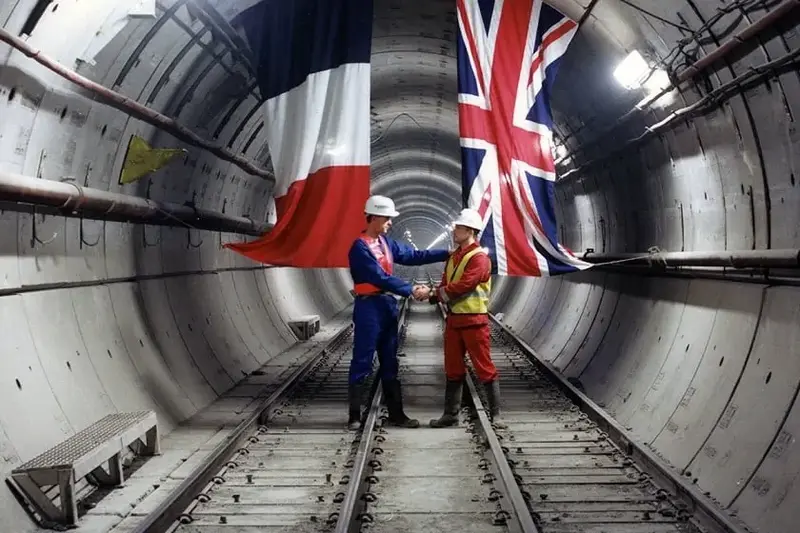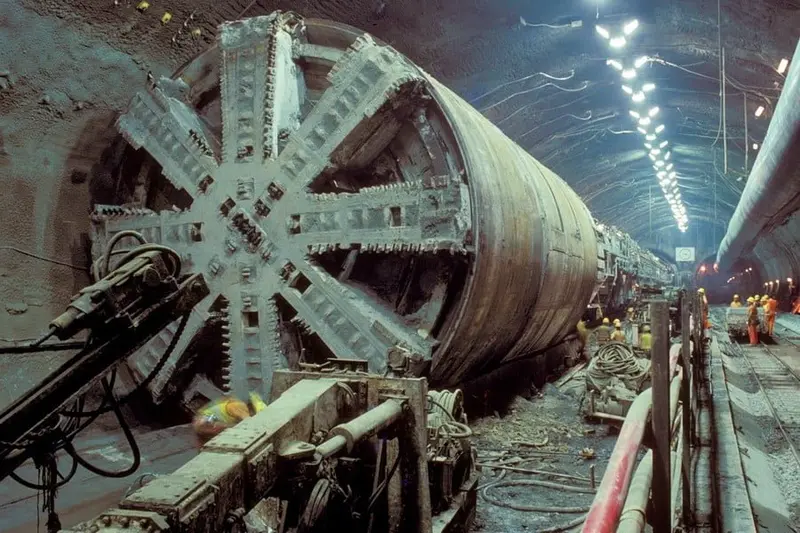In 1988, Japan opened the Seikan Tunnel, which at the time was considered the longest structure of its kind in the world, stretching 53.85 kilometers, with 23.3 kilometers laid underwater. In 1994, under La Manche The Eurotunnel was built with a total length of 51 km, connecting France and Great Britain. A 39-kilometer section of this unique railway corridor was underwater. Thus, the Eurotunnel became a world record holder for the longest underwater tunnel.

Interestingly, the history of these engineering wonders began long before the mentioned times.
Tunnel boring machines
At the beginning of the 19th century, Franco-British engineer Marc Isambard Brunel enjoyed drawing inspiration from nature. Observing how the plates of a shipworm’s shell helped it bore into wood, Brunel adopted this principle and applied it in 1818 to the design of a tunneling shield necessary for constructing underwater tunnels.
The iron shield had several compartments, each of which could move forward independently of the others. These compartments had passageways that crushed the ground in front of them and pushed their part of the structure forward using a jack. The shield was driven into the rock, while the workers simultaneously reinforced the tunnel with brick masonry.

In 1842, thanks to this revolutionary technology, the first underwater tunnel in history was constructed under the Thames in London. The method was refined during the construction of other tunnels under the famous British river. For example, air pressure was created in front of the shield to prevent flooding during the work.
Tunnel boring machines are still indispensable in the construction of underwater tunnels. However, they are now cylindrical in shape and are typically made of steel. Steel is also used to manufacture the tunnel’s support rings. To push the machine forward, builders use hydraulic jacks. When it is not moving, access to the area in front of the machine is provided through doors. To protect workers, the machine is equipped with a protective casing.
Tunnel boring machines
Of course, digging soft soil with a shovel is one thing, but drilling underwater rock is something entirely different. And you definitely can’t do without tunnel boring machines (TBMs), which, for example, were actively used in the construction of the tunnel under the English Channel.
In terms of their function, such machines are similar to tunnel boring shields. However, in the case of the TPM, a mechanical cutting head is used for drilling rock instead of human power. Rock fragments are transported back via a conveyor belt, the publication reported. IFLScience .

Submerged tunnels
In the two previous methods of constructing underwater tunnels, the walls are built as the soil is excavated. However, in some cases, builders resort to the method of so-called immersed tunnels, which was invented by American engineer W. J. Wilgus.
This method involves creating ready-made segments of the structure that resemble hollow cylinders. They are lowered onto a flat bottom, secured, the joints are sealed, and water is pumped out.
